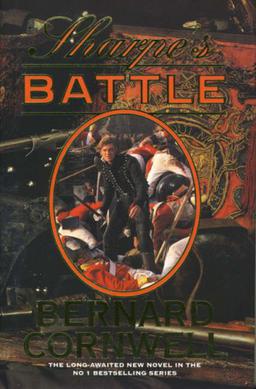
Marie-Anne Charlotte de Corday d'Armont, known simply as Charlotte Corday, was a figure of the French Revolution who assassinated revolutionary and Jacobin leader Jean-Paul Marat on 13 July 1793.
Sharpe is a series of historical fiction stories by Bernard Cornwell centred on the character of British soldier Richard Sharpe. The stories formed the basis for an ITV television series featuring Sean Bean in the title role.

The title of Earl of Ulster has been created six times in the Peerage of Ireland and twice in the Peerage of the United Kingdom. Since 1928, the title has been held by the Duke of Gloucester and is used as a courtesy title by the Duke's eldest son, currently Alexander Windsor, Earl of Ulster. The wife of the Earl of Ulster is known as the Countess of Ulster. Ulster, one of the four traditional provinces of Ireland, consists of nine counties: six of these make up Northern Ireland; the remainder are in the Republic of Ireland.

Lettice Knollys, Countess of Essex and Countess of Leicester, was an English noblewoman and mother to the courtiers Robert Devereux, 2nd Earl of Essex, and Lady Penelope Rich. By her second marriage to Elizabeth I's favourite, Robert Dudley, Earl of Leicester, she incurred the Queen's unrelenting displeasure.
Marjorie of Carrick was Countess of Carrick, Scotland, from 1256 to 1292, and is notable as the mother of Robert the Bruce.

Elizabeth Hamilton, Countess of Orkney was an English courtier from the Villiers family and the reputed mistress of William III, King of England and Scotland, from 1680 until 1695. She was a lady-in-waiting to his wife and co-monarch, Queen Mary II.

Sharpe's Havoc: Richard Sharpe and the Battle of Oporto is the seventh historical novel in the Richard Sharpe series by Bernard Cornwell, first published in 2003.

Sharpe's Battle is the twelfth historical novel in the Richard Sharpe series by Bernard Cornwell, first published in 1995. The story is set during the Peninsular War in Spain in 1811.
Uhtred of Bamburgh, was ruler of Bamburgh and from 1006 to 1016 the ealdorman of Northumbria. He was the son of Waltheof I, ruler of Bamburgh (Bebbanburg), whose family the Eadwulfings had ruled the surrounding region for over a century. Uhtred's death by assassination was described in De obsessione Dunelmi and has been interpreted as the beginning of a blood feud. Lest he be confused with Uhtred, the son of Eadwulf I of Bamburgh, he historically has been referred to as Uhtred the Bold.

Sharpe's Sword is a historical novel in the Richard Sharpe series by Bernard Cornwell. It is the fourth in the series, being first published in 1983, though the fifteenth chronologically. Set in the summer of 1812 including the Battle of Salamanca on 22 July 1812, the story follows Sharpe and his friend Sergeant Harper involved in espionage while hunting down the sadistic and highly dangerous Colonel Philippe Leroux.

Sharpe's Waterloo is a historical novel in the Richard Sharpe series by Bernard Cornwell. Originally published in 1990 under the title Waterloo, it is the eleventh novel of the Sharpe series and the twentieth novel in chronological order. Cornwell stated that he intended to end the series here, but later changed his mind.
Henry Allen John Bathurst, 8th Earl Bathurst DL, styled Lord Apsley from 1942 to 1943, was a British peer, soldier and Conservative politician. He was most recently known for an altercation with Prince William.
Sharpe's Regiment is a British television drama, the ninth of a series that follows the career of Richard Sharpe, a British soldier during the Napoleonic Wars. This episode is based on the 1986 novel of the same name by Bernard Cornwell.

Sharpe's Enemy: Richard Sharpe and the Defence of Portugal, Christmas 1812 is the fifteenth historical novel in the Richard Sharpe series by Bernard Cornwell, first published in 1984. The story is set in 1812 during the Napoleonic Wars.
Jamila Ashley-Cooper, Countess of Shaftesbury, is the French-born Tunisian widow and murderer of the 10th Earl of Shaftesbury, a British peer, and was imprisoned for having paid her brother to murder her husband.

1356 is the fourth novel in The Grail Quest series by Bernard Cornwell, first published in 2012. It is set in 1356, nearly a decade after the original trilogy, and culminates with the Battle of Poitiers. Intertwined in the plot is the quest to find la Malice, a fabled sword of Saint Peter and Christian relic which may turn the tide of the long war for France.
William Jackson is a fictional character in Wentworth Prison. Will is portrayed by Robbie Magasiva. Will is notable for his friendships with Matthew Fletcher and Bea Smith. Will has also been involved in a one-sided rivalry with Joan Ferguson.

Sharpe's Assassin is the twenty-first historical novel in the Richard Sharpe series by Bernard Cornwell, published in 2021. The story is set in June 1815, immediately after the Battle of Waterloo, and during the occupation of Paris.










